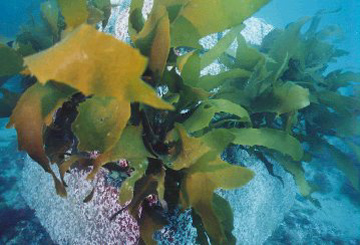Those tangled, smelly strands of seaweed that wash up on your favorite beach are little islands of life. They attract crabs, turtles, birds, and other creatures. And they can have a profound impact on the native ecosystems around them.
 Seaweed growing on an artificial reef. Credit: National Oceanic and Atmospheric Administration
Seaweed growing on an artificial reef. Credit: National Oceanic and Atmospheric AdministrationResearchers saw that impact in a series of tests in the Bahamas. They cleared the seaweed from some sections of beach and added it to others. Then they watched what happened over the following year.
Where seaweed was added, the decaying mass added nutrients to the sand around it. The native beach plants feasted on these nutrients, and grew about 70 percent more over the year than plants on the sections of beach without seaweed.
The decaying seaweed also attracted a lot of tiny creatures, such as the small crustaceans known as sand fleas. And that drew in more spiders, lizards, and other critters that normally feed on land-based insects. In fact, the number of lizards was about two-thirds higher with the seaweed than without. And with the lizards gorging on the easy pickings around the seaweed, land-based insects did more damage to nearby plants.
The study shows how a seemingly minor change to a beach — adding a pile of seaweed — can change the ecosystem around it. And many marine scientists expect to see more seaweed on the beaches in the years ahead as a result of global climate change, coastal development, and overfishing. That could mean that we’ll be seeing more small but important changes on the beaches — thanks to those smelly seaweeds.

